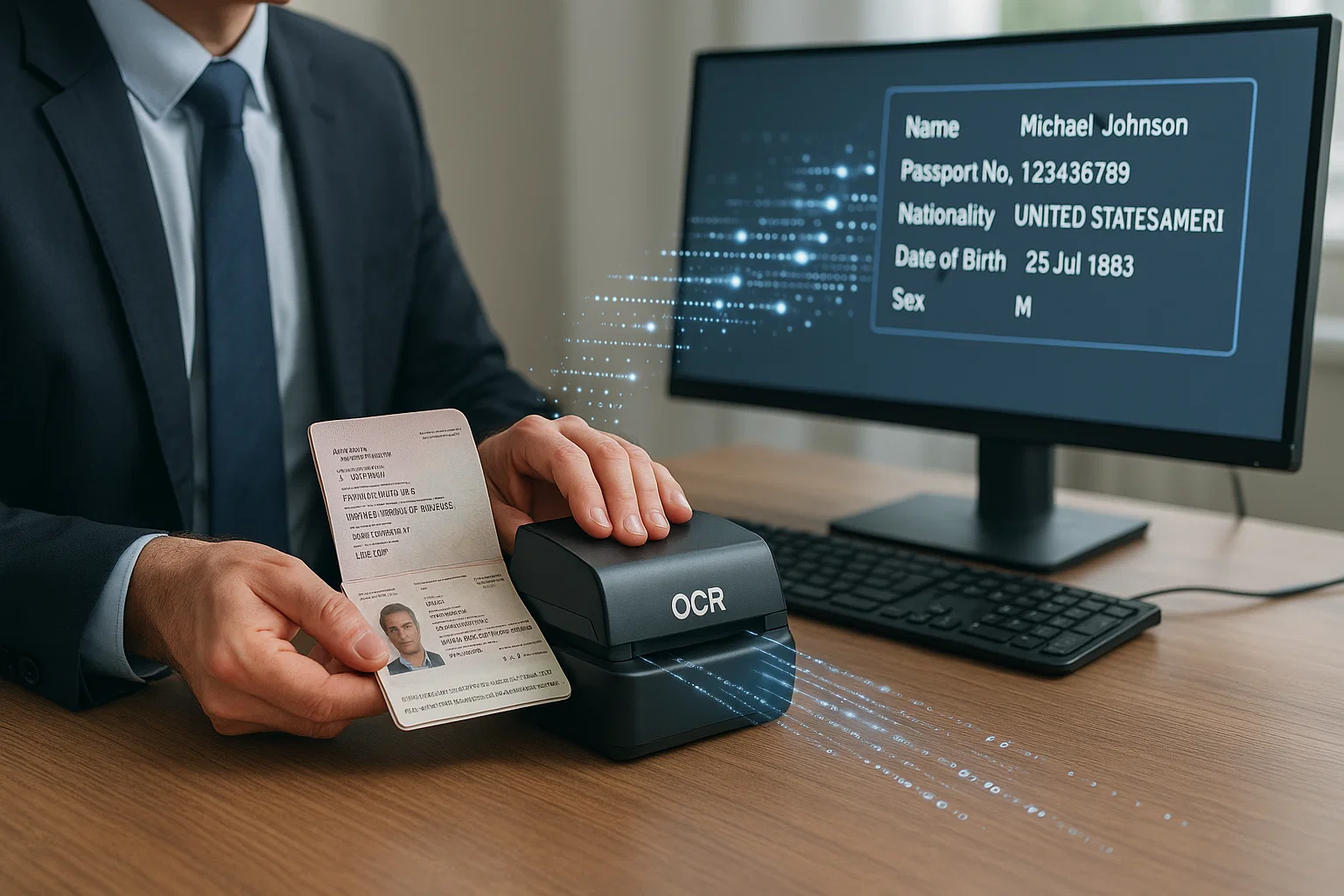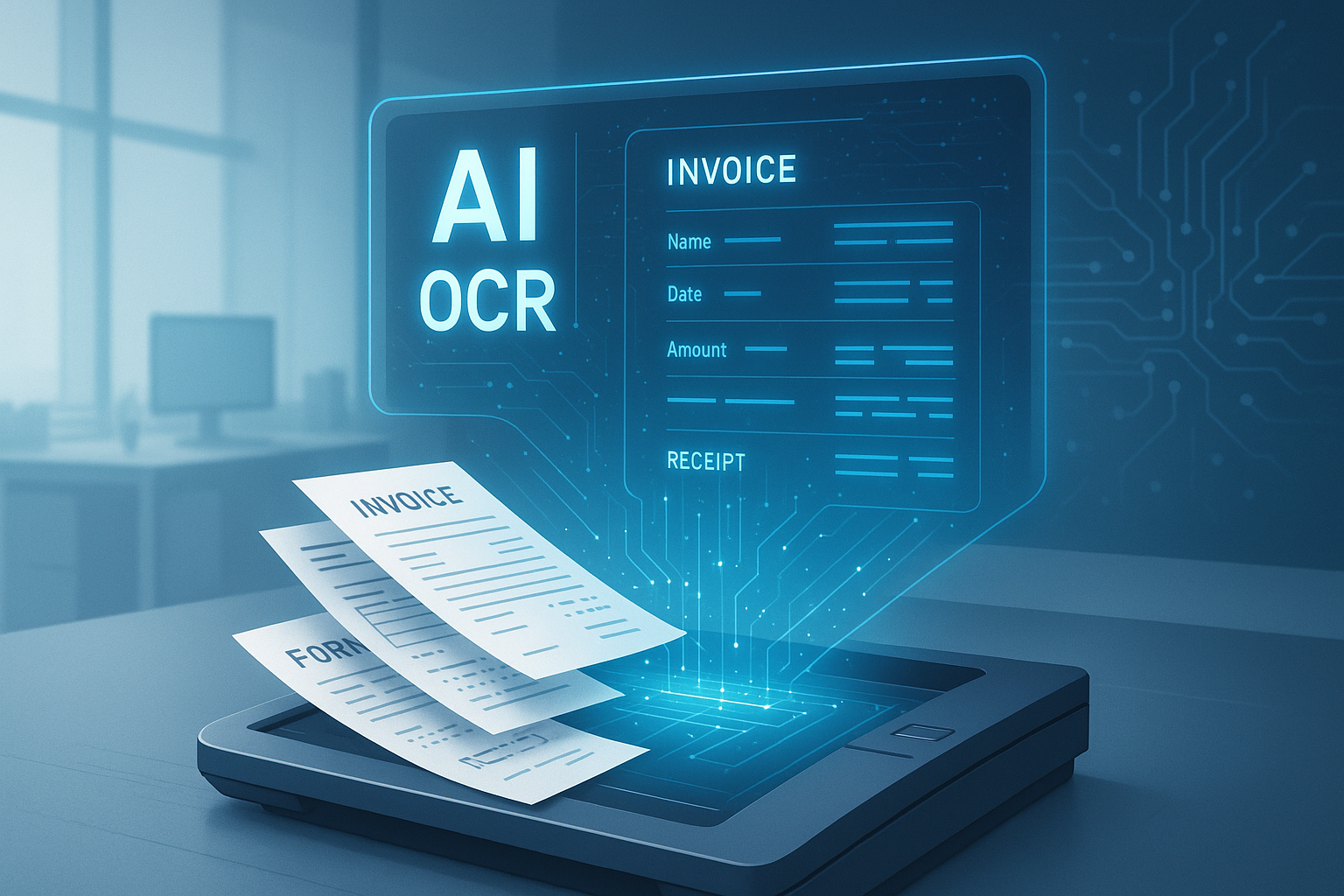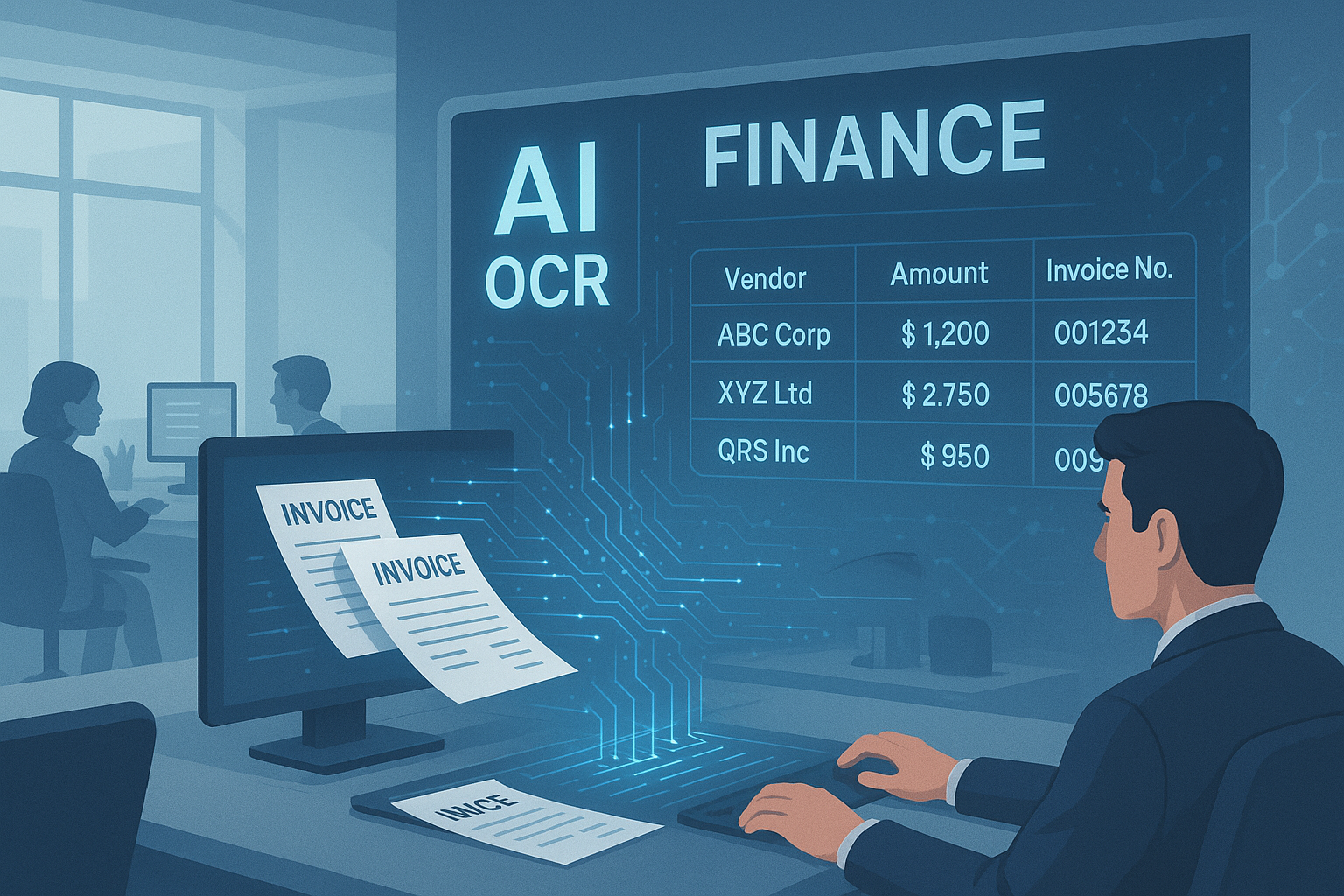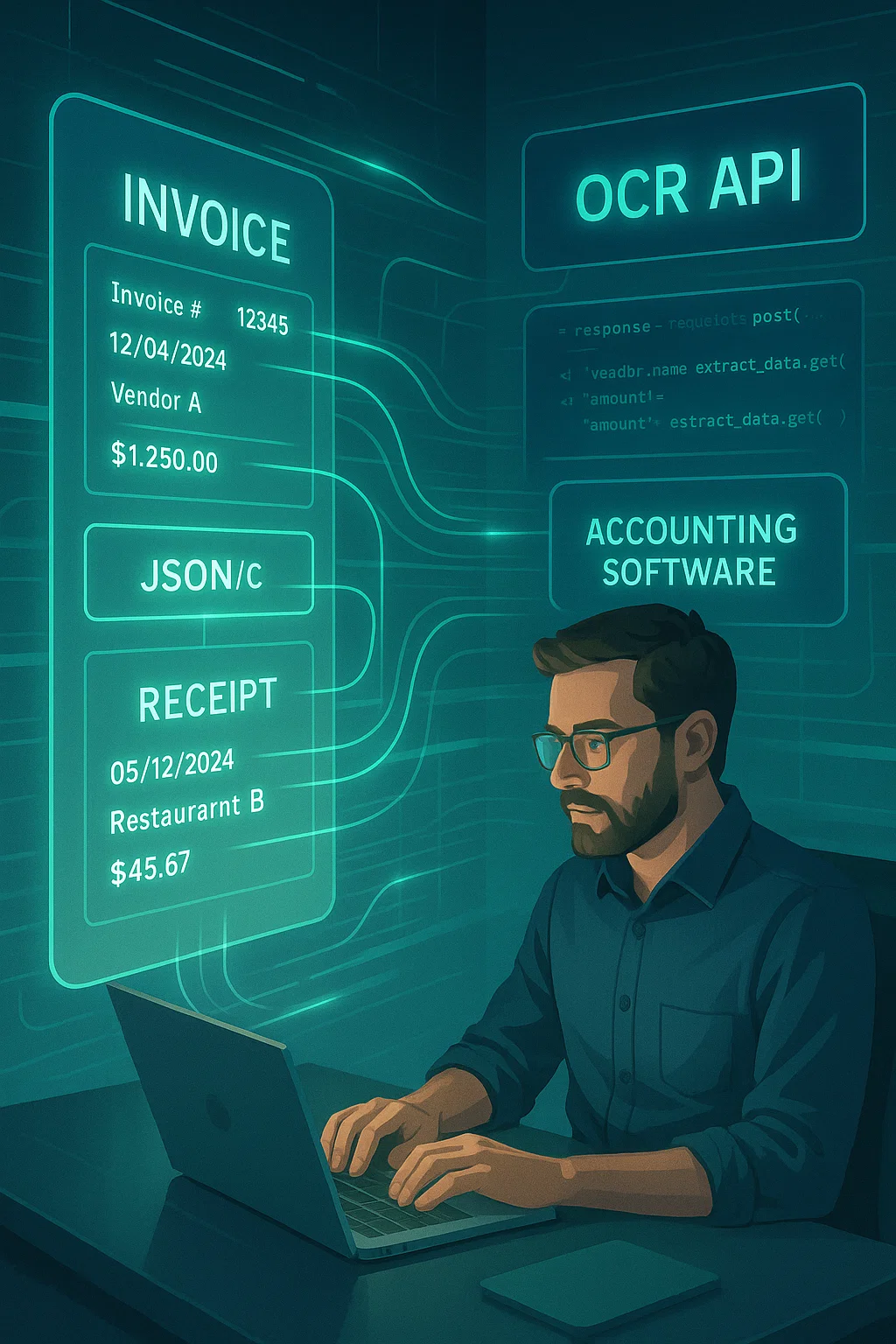Passport OCR: Revolutionizing Document Processing with Intelligent Solutions
Discover how Passport OCR technology is transforming intelligent document processing for businesses, enabling faster data extraction and improved workflow efficiency.

Table of contents
Passport OCR: Transforming Document Processing in the Digital Age
In today's fast-paced business environment, manual document processing is quickly becoming obsolete. Organizations dealing with large volumes of identification documents are turning to specialized technologies like Passport OCR to streamline operations and enhance data accuracy. This innovative approach is changing how businesses handle sensitive identification documents while delivering significant efficiency gains.
What is Passport OCR?
Passport OCR (Optical Character Recognition) is a specialized form of intelligent document processing technology designed to automatically extract and digitize information from passport documents. Unlike basic OCR systems, Passport OCR is specifically calibrated to recognize and process the unique layout, security features, and data fields found in international passports.
This technology can quickly scan and extract crucial information such as:
- Personal identification details (name, date of birth, nationality)
- Passport number and issuance information
- Machine Readable Zone (MRZ) data
- Biometric information references
Modern Passport OCR solutions can process this information in seconds, dramatically reducing the time needed for document verification while minimizing human error.
How Passport OCR Fits into Intelligent Document Processing
Passport OCR represents a specialized application within the broader framework of intelligent document processing solutions. While general document processing handles various document types, Passport OCR focuses specifically on the unique challenges presented by passport documents.
Intelligent document processing (IDP) combines several advanced technologies to automate the extraction, classification, and processing of information from documents. When applied to passports, this creates a powerful solution for organizations that regularly handle these critical identification documents.
The Technical Foundation of Passport OCR
Modern Passport OCR leverages several sophisticated technologies working in concert:
- Advanced OCR algorithms specifically trained on passport formatting
- Machine learning models that improve accuracy over time
- Computer vision technology to detect document authenticity features
- Natural Language Processing (NLP) to understand contextual information
These technologies work together to overcome challenges like varying passport formats from different countries, security features that can interfere with scanning, and the need to validate document authenticity.
Business Applications of Passport OCR Technology
Several industries have found valuable applications for Passport OCR technology:
Travel and Hospitality
Airlines, hotels, and cruise lines use Passport OCR to streamline check-in processes and comply with international travel requirements. This reduces passenger wait times while ensuring accurate data collection for regulatory compliance.
Financial Services
Banks and financial institutions leverage Passport OCR for customer onboarding and Know Your Customer (KYC) verification. This accelerates account opening while maintaining robust identity verification standards.
Border Control and Immigration
Government agencies employ advanced Passport OCR systems to process travelers more efficiently while maintaining high security standards. These systems can quickly flag potential issues for further investigation.
Corporate Security
Large organizations use Passport OCR for visitor management systems and employee verification, enhancing physical security while creating a more seamless experience.
Benefits of Implementing Passport OCR Solutions
Organizations implementing Passport OCR as part of their intelligent document processing strategy realize several significant benefits:
Enhanced Efficiency
Manual passport processing is time-consuming and labor-intensive. Passport OCR can reduce processing time from minutes to seconds, allowing staff to focus on higher-value tasks that require human judgment.
Improved Accuracy
Human data entry inevitably leads to errors. Passport OCR systems typically achieve accuracy rates exceeding 98%, significantly reducing data errors that can cause compliance issues or customer service problems.
Better Customer Experience
Faster processing times translate directly to improved customer experiences. Whether at hotel check-in, airport security, or bank account opening, customers appreciate the speed and convenience of automated passport processing.
Robust Compliance
Many industries face strict regulatory requirements regarding identity verification. Passport OCR systems maintain detailed audit trails and consistent verification processes that help organizations demonstrate compliance.
Cost Reduction
While implementing intelligent document processing software requires initial investment, the long-term cost savings are substantial. Organizations typically see reduced staffing needs for document processing and fewer costly errors.
Choosing the Right Passport OCR Solution
When evaluating intelligent document processing solutions with Passport OCR capabilities, organizations should consider several key factors:
Accuracy and Recognition Capabilities
The solution should demonstrate high accuracy rates across different passport types and conditions. This includes the ability to handle worn documents, different languages, and various security features.
Integration Flexibility
The best solutions easily integrate with existing business systems, including customer relationship management (CRM) platforms, enterprise resource planning (ERP) systems, and industry-specific applications.
Security Features
Given the sensitive nature of passport data, robust security features are essential. Look for solutions offering end-to-end encryption, secure data handling practices, and compliance with relevant data protection regulations.
Scalability
As business needs grow, the Passport OCR solution should scale accordingly. Cloud-based solutions often provide the flexibility to handle varying document volumes without performance degradation.
Implementation Challenges and Solutions
While Passport OCR offers significant benefits, organizations may face implementation challenges:
Initial Accuracy Tuning
Even the best systems require initial calibration to reach optimal accuracy levels. Working with experienced implementation partners can accelerate this process and ensure the system meets specific business requirements.
Staff Adoption
Employees accustomed to manual processes may resist new technology. Comprehensive training and clear communication about the benefits can help overcome this resistance.
Integration Complexity
Connecting Passport OCR to existing systems sometimes presents technical challenges. Choosing solutions with robust APIs and pre-built connectors can simplify this process.
The Future of Passport OCR and Intelligent Document Processing
The field of intelligent document processing continues to evolve rapidly, with several emerging trends likely to impact Passport OCR technology:
Enhanced Fraud Detection
Next-generation systems will incorporate more sophisticated authentication features, making it increasingly difficult to use fraudulent identification documents.
Mobile Capture Improvements
As smartphone cameras improve, mobile-based Passport OCR will become more prevalent, allowing for remote identity verification without specialized scanning equipment.
Biometric Integration
Future systems will more seamlessly integrate passport data extraction with biometric verification, creating multi-factor authentication processes that are both secure and user-friendly.
Conclusion
Passport OCR represents a specialized but increasingly important component of intelligent document processing solutions. For organizations regularly handling passport documents, implementing this technology can deliver significant efficiency gains, cost savings, and improved customer experiences.
As businesses continue to digitize operations, technologies like Passport OCR will become standard components of document workflows. Organizations that adopt these solutions early will gain competitive advantages through faster processing, reduced errors, and improved customer satisfaction.
By understanding the capabilities, benefits, and implementation considerations of Passport OCR, business leaders can make informed decisions about incorporating this technology into their document processing strategies.
Related Blog Posts

Revolutionizing Document Management with OCR Technology
Explore how AI-powered OCR technology transforms document management by digitizing text, streamlining workflows, reducing errors, and boosting efficiency across industries.

Smarter Invoice Processing: The OCR Advantage for Finance Departments
Learn how OCR technology revolutionizes invoice processing for finance departments by automating data extraction from invoices, reducing costs, and boosting accuracy. This guide covers OCR's benefits, AI enhancements, and practical steps to transform accounts payable operations

OCR APIs: The Secret Weapon Smart Finance Teams Are Using Right Now
Discover how OCR APIs transform finance teams by automating data entry from receipts and invoices, cutting processing time by up to 85%, and boosting accuracy to 98%. This guide shares real-world insights for modernizing financial workflows.
Ready to Transform Your Lending Process?
See how DocsAPI's AI-powered industry classification can help you process loans faster, improve accuracy, and scale your operations.
